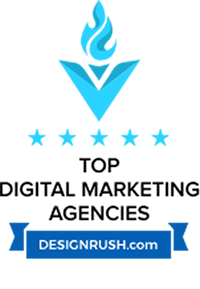Social Media Marketing: A Guide for SMBs and Professional Service Firms
For medium-sized businesses and professional service firms, harnessing social media marketing can be a powerful strategy to achieve various objectives. With structured efforts, you can enhance customer engagement, extend your reach, and strengthen brand perception.
Learn more about social media marketing strategies to grow your business.
Understanding Social Media’s Role in Business Growth
Social media marketing involves the strategic use of social platforms to promote products or services, enhancing brand awareness and customer interaction. By facilitating a direct line of communication between businesses and their audience, social media is a catalyst for building trust and loyalty, driving engagement through likes, comments, and shares.
This form of marketing is particularly impactful for small businesses seeking growth, as it offers cost-effective avenues to reach wider audiences without the need for extensive traditional advertising budgets.
Building Brand Awareness And Shopping Experience Through Social Media
For businesses aiming to increase their brand awareness, social media platforms offer a valuable and accessible set of tools. With the right strategies, companies can significantly enhance their visibility and reach.
- Consistent Posting: Establishing a regular posting schedule can help maintain your brand’s presence. Consistency signals reliability and keeps your audience engaged with your content.
- Engaging Content: Create content that sparks conversation and engages your followers. Utilizing a mix of visuals, videos, and interactive elements like polls can make your profile more attractive and memorable.
- Utilizing Hashtags: Implement popular and relevant hashtags to expand your reach. This can help you tap into trending conversations and connect with wider audiences beyond your existing followers.
- Collaborations and Influencer Partnerships: Partnering with influencers or other brands can introduce your business to new audiences. It provides credibility and encourages cross-promotion, inviting more eyes to your brand.
The Short-Form Video Content Revolution
Short-form video content, like Instagram Reels and TikTok videos, has skyrocketed in popularity. These bite-sized clips allow businesses to deliver information swiftly while capturing viewers’ attention with dynamic visuals and storytelling.
By blending creativity with concise messaging, companies can effectively engage audiences, encouraging shares and boosting their online presence. This highly engaging format provides businesses with a powerful tool to interact with customers, solidify their brand image, and stimulate business growth.
The Rise of In-App Sales
As businesses aim for improved brand awareness, in-app sales on social media platforms present a unique opportunity. Social platforms now integrate e-commerce capabilities, enabling users to make purchases directly within the app.
For small businesses, this offers several advantages:
- Streamlined Purchase Process: In-app sales reduce friction in the buying process, making it easier for customers to purchase without leaving the platform.
- Broader Audience Reach: Leveraging social media’s vast user base can expose your products to potential customers who might not have discovered them otherwise.
- Enhanced User Engagement: Selling directly in the app allows businesses to create a more immersive shopping experience that can increase user engagement and satisfaction.
The 4 Strategic Moves Behind Every Successful Social Media Plan
Define Clear Objectives
Before venturing into any social media efforts, identifying your objectives is essential. Are you aiming to increase your brand awareness, drive traffic to your website, or generate leads?
Be specific in your goals. This clarity will guide your choice of platforms and content types, ensuring all your efforts contribute to overarching business strategies.
Choose the Right Platforms
Not all social media platforms are created equal, nor do they serve the same audience.
LinkedIn, for instance, is particularly suited for B2B marketing interactions favored by financial services and accounting firms. Platforms like Facebook and Instagram may be better for engaging with a broader clientele or showcasing company culture.
Engage Authentically
Social media thrives on engagement. Whether it’s through influencer marketing or more direct engagements, being genuine is central to maintaining audience trust and cementing genuine connections.
This means you should prioritize interactions with your audience by responding to comments, asking questions, and sharing relevant industry content.
Integrate AI in Social Media Efforts
As technology advances, incorporating AI into your social media strategy can simplify many aspects of your operations. AI tools, such as ChatGPT for content generation or Sprout Social’s AI-driven analytics, can handle repetitive tasks, analyze social media trends, and provide insights to improve engagement.
Choose tools that enhance your current efforts without overwhelming your team. Given the myriad of options available, consider starting with AI solutions that address your immediate needs, like content scheduling or sentiment analysis.
Track and Measure Performance
Utilize analytics tools to keep track of how your social media campaigns are performing. These metrics will help you figure out what works and how you can optimize future efforts.
For example, if you notice certain content types garner more attention, consider focusing more on those formats.
Engaging Your Audience Effectively
When it comes to maintaining a loyal audience, interactions are key. Personalizing your messages and crafting timely responses are strategies that can deepen connections and keep your audience engaged.
Consider segmenting your audience into different groups based on their interests or behaviors. By doing so, you can tailor your content to resonate more deeply, ensuring that your messages hit home.
Utilizing Social Listening for Engagement
Social listening is an invaluable tool for gaining insights into customer preferences and shaping your engagement strategies. By monitoring conversations relevant to your industry, you can tailor your content to address customer interests and challenges directly.
For example, if you discover a rising demand for specific financial services, you can create content around this demand, guiding users toward a solution you offer.
In fact, studies have shown that 71% of consumers who have had a positive social media experience with a brand are likely to recommend it to others, showcasing the power of engagement in driving word-of-mouth conversions.
Additionally, track mentions of your brand across platforms to gauge customer sentiment. Addressing both positive feedback and concerns promptly can strengthen customer relations and display a commitment to client satisfaction, further encouraging conversions.
Driving Web Traffic and Conversions with Social Platforms
Social media platforms present numerous opportunities to drive web traffic and increase conversions for businesses. Implementing targeted strategies like engaging content and effective call-to-actions (CTAs) can significantly enhance your online presence.
Optimizing profiles is a vital first step. Ensure that all your social media profiles effectively convey the value of your services, with clear CTAs that direct users to your website. Highlight any unique services or offerings and use concise language that resonates with your target audience.
The Power of User-Generated Content (UGC)
User-generated content isn’t just a passing trend—it’s a marketing strategy that packs a punch. Leveraging content created by your audience can significantly enhance authenticity and trust, two elements that are invaluable in any marketing strategy. Here’s how:
- Authenticity: User-generated content brings real, unfiltered experiences to the forefront, allowing potential clients to see genuine interactions with your service.
- Trust Building: People tend to trust actual user experiences more than generic advertisements. Showcasing testimonials, reviews, or case studies provided by real customers can bridge a crucial trust gap.
- Cost-Effectiveness: It’s notably more cost-effective to utilize user-generated content than consistently producing original material, making it a smart choice for firms operating on tighter budgets.
- Community Engagement: Encouraging contributions from your audience not only strengthens your community but also deepens client relationships.
- SEO Benefits: Fresh and varied content, often in the form of reviews, blogs, or social media posts, can enhance your SEO efforts, driving more traffic to your platforms.
Key UGC Strategies to Adopt Right Away
Now, let’s explore strategies to encourage and showcase user-generated content:
- Host Social Media Contests: Invite your followers to share their experiences or creative content about your firm for a chance to be featured or win a prize.
- Create Opportunities for Reviews: Make it easy for clients to leave reviews on platforms that matter, whether on your website or third-party services like Google Reviews or LinkedIn.
- Feature Customer Stories: Dedicate a section of your blog to highlight stories or case studies from satisfied clients. This not only validates their experience but also provides real-world examples of your services in action.
- Engage on Social Media: Respond to comments or shares about your firm. This engagement motivates further interaction and content creation from your audience.
Future Trends in Social Media Marketing
As social media platforms evolve, so too must our approach to leveraging their potential. The future trends in social media marketing promise to transform the way businesses engage with their audiences. Two notable innovations are augmented reality (AR) and virtual reality (VR).
These immersive technologies are poised to offer new dimensions to content strategies. For instance, interactive AR experiences can allow customers to “try” products virtually before they buy them, while VR can create environments where users interact with brands in ways never seen before. According to industry projections, the AR and VR market is expected to grow drastically, reaching approximately $80 billion by 2025.
This growth highlights the potential impact on social media marketing, necessitating businesses to integrate these elements into their content strategies.
Experimentation and Innovation in Social Media Approaches
Keeping pace with future trends requires consistent innovation and experimentation in social media strategies. Adapting to new tools and platforms as they emerge will ensure relevance in a rapidly changing market.
Businesses should cultivate a mindset of continual adaptation, regularly testing new approaches to content creation and dissemination. Integrating user-generated content, dynamic video formats, or interactive polls and quizzes can diversify engagement tactics. The key is to stay ahead of the trends by closely monitoring technological advancements and being willing to try new techniques that promise to enhance customer interaction.
Statistics show that businesses investing in emerging technologies see a noticeable increase in engagement rates; for instance, companies using video in their marketing grew revenue 49% faster than those not employing it. This underscores the importance of staying on top of technological trends and being open to change.
Conclusion
As we wrap up our exploration of strategies for social media marketing, it’s evident that the integration of these approaches holds substantial promise for small businesses willing to engage effectively with their target audiences. The importance of integrating these strategies lies in the potential they possess to increase brand visibility, drive engagement, and ultimately, facilitate growth.
To maximize the benefits of these strategies, it’s advisable to start small and build upon your successes. Track your progress rigorously to understand what works and what doesn’t, allowing you to make informed adjustments to your approach.
Social media presents an opportunity for continuous learning and adaptation. Each platform represents a unique environment with its own audience dynamics. By embracing this growth channel, you can tailor your strategies to your business objectives and maximize your return on investment.
Key Takeaways
- Implement Effective Strategies: Execute the outlined social media tactics to enhance audience engagement and brand visibility.
- Start Small: Begin with manageable steps and gradually expand your efforts as you track and understand what works for your business.
- Track Progress: Measure and analyze your social media activities to keep refining your approach for better outcomes.
Approach social media marketing with confidence and creativity, keeping in mind the power it holds for amplifying your business’s presence and engagement. It’s time to harness social media as a platform for growth and success.
FAQ
How can I measure brand awareness through social media?
To measure brand awareness through social media, focus on metrics such as reach, impressions, and mentions. Tracking the number of followers or subscribers over time can also provide insight into your growing presence. Engaging content that encourages shares and comments can significantly increase visibility and help assess how well your brand is known.
Which metrics should I track to boost web traffic effectively?
For boosting web traffic, track metrics such as page views, unique visitors, and bounce rates. Monitoring the sources of your traffic—whether organic, direct, or referral—can pinpoint where your efforts are paying off. Tools like Google Analytics are essential to analyze traffic patterns and visitor behavior, allowing for adjustments to improve engagement.
How do I select the right social media platforms for my brand?
Choosing the right social media platforms depends on your target audience and the type of content you produce. For professional services, LinkedIn is typically effective due to its business-oriented nature. However, platforms like Facebook and Twitter can also be valuable for broader reach. Consider the demographics and interests of your audience to ensure alignment with your social media strategy.




